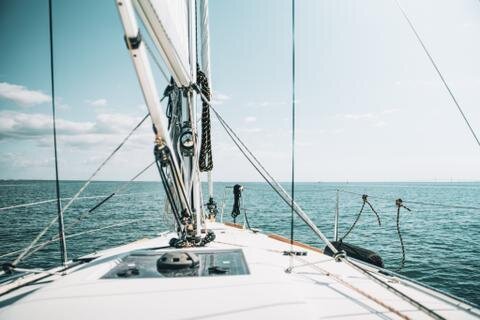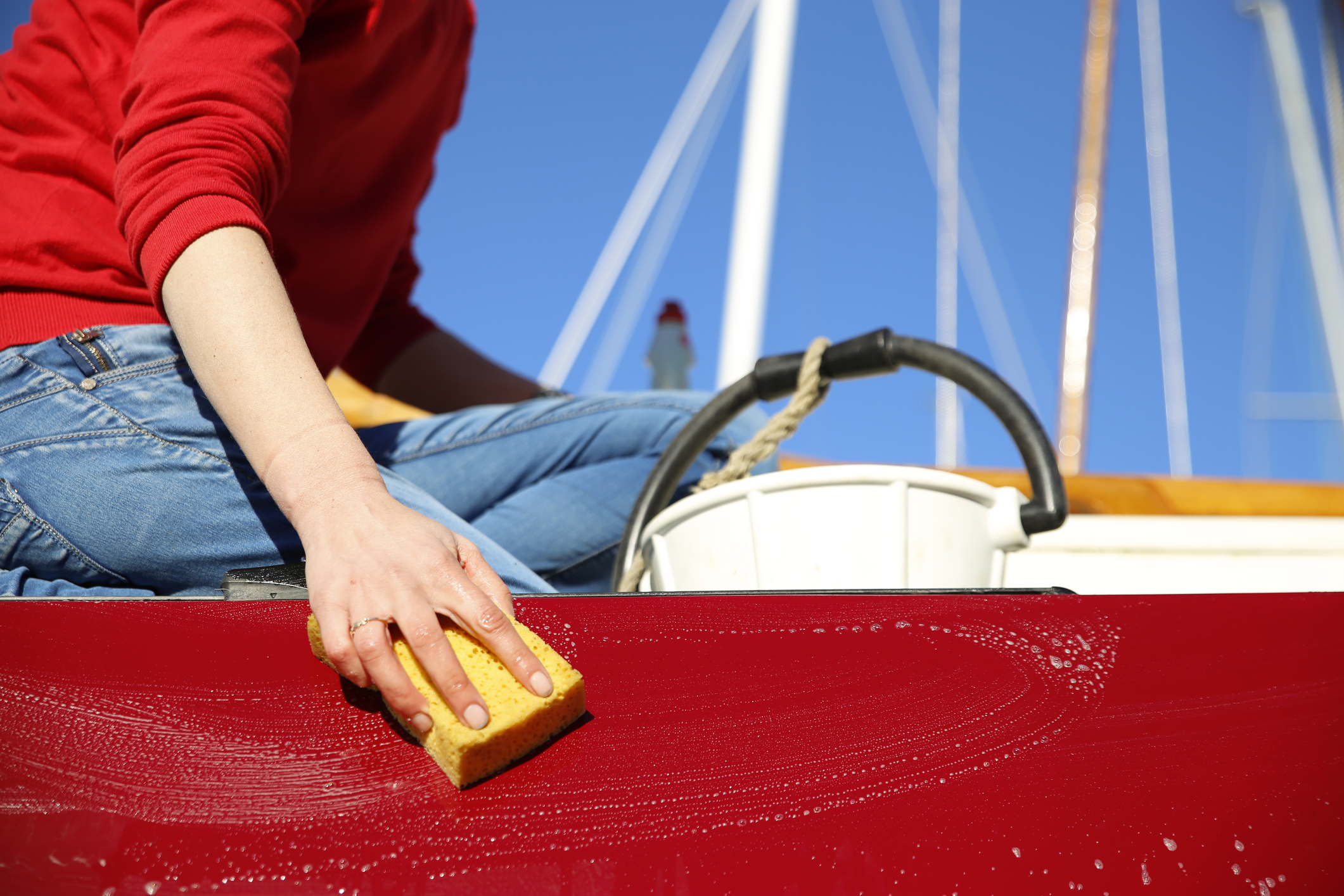Sailboats are full of different types of sails, ropes, poles, gadgets, and gizmos. Because there is such a variety, every new sailor should familiarize themselves with them before ever hitting the water.
It's important to understand that different boats have different parts. And regardless of which type of sailboat you have, this blog post has got you covered. Keep reading to learn about various parts of a sailboat below.
Why Sailboat Vocabulary Matters
So, why bother understanding sailboat vocabulary? Well, knowing the various parts of a sailboat will help you make the most of your investment and keep your rig — and your crew — safe.
More specifically, knowing the correct lingo can help:
- Ensure Safety: Unfortunately, emergencies can happen, and if a line fails thanks to rough wind or conditions, you don't have time to lollygag. Every sailor needs to be able to identify the broken part — a halyard, a sheet, etc. — and act fast.
- Improve Performance: Understanding your vessel's geometry can absolutely be the difference between a slower-than-molasses cruise and an exhilarating ride.
- Understand Maintenance: When you need a repair, you have to be able to tell the yard exactly what's chafing on your Forestay versus your shrouds.
Different Sailboats Have Different Parts
Before diving into the parts of a sailboat, we want to remind you that not all sailboats are equal. The overall configuration of masts, sails, and standing rigging (details below) is what's called the rig, and the type of rig determines the number of masts and the unique placement of the sails. Below, you'll learn more about these key differences:
- Sloop: A sloop is a type of sailboat with one mast and one headsail (like a gib or genoa).
- Cutter: A cutter has one mast and two headsails, making it super versatile and great for cruising in rough(er) conditions.
- Ketch/Yawl: A ketch and a yawl are both double-masted sailboats. However, the ketch has a smaller mast (known as the mizzen mast) positioned before the rudder post, and a yawl has a mizzen mast that comes after it.
What Are The Parts of a Sailboat Called?
Now, onto the fun part! Here are the basic parts of a sailboat that every sailor should know.
The Rigging (AKA the Framework and Controls)
Your boat's rigging is the system of ropes, chains, and cables that support the mast and control the sails.
- Mast and Boom: The mast is the tall, vertical pole that supports the sails. And the boom is a horizontal pole that extends from the base of the mast and holds the bottom edge (aka foot) of the mainsail.
- Standing Rigging: Standing rigging is composed of the fixed, non-moving wires that hold the mast upright.
- Shrouds and Stays: These are your side-to-side and front-and-back support.
- Spreaders: These are small, horizontal struts attached to the mast that push the shrouds outward – offering even more support.
- Running Rigging: Running rigging is composed of the lines you pull to operate the sails.
- Halyard: This is the line you use to hoist (raise) or lower the sail.
- Sheet: This is the line you use to control the angle — or trim — of the sail relative to the wind.
- Winch: The winch is a powerful metal drum that you wrap lines around to amplify your pulling force. (It makes trimming sails a heck of a lot easier.)
- Block: Essentially, a block is a pulley that's used to reduce friction and guide your lines.
- Shackle: This metal, U-shaped fitting connects the parts of a sail (like the head) to the halyards.
The Sails (Self-Explanatory)
Of course, sails are the first thing to come to mind when picturing a sailboat. These special fabrics are designed to drive the boat by catching the wind.
- Mainsail: Your mainsail is exactly what it sounds like – the big sail attached to the mast/boom. It's undoubtedly the most essential sail and the primary source of propulsion.
- Headsail: A headsail is any sail that's in front of the mast – typically the smaller Jib or a larger Genoa.
- Spinnaker or Gennaker: A spinnaker is a large, balloon-like sail that's designed specifically for sailing downwind. And a gennaker is a type of asymmetrical spinnaker
Parts of a Sail (Because Sailing Anatomy Gets Specific)
- Head: The top corner of the sail.
- Foot: The entire bottom edge of the sail.
- Tack: The bottom forward corner, near the mast.
- Clew: The bottom aft corner, where the boom or sheet attaches.
Specialized Hull and Steering Components
Essentially, they prevent the boat from tipping over and help you steer.
- Keel / Centerboard: The centerboard is a fin-like appendage that keeps the sailboat afloat and upright. It pivots in and out of a slot in the hull/keel of a boat.
- Rudder: The rudder is a movable fin (usually at the stern) that steers the boat by redirecting the flow of water.
- Tiller: Essentially a simple stick that turns the rudder.
- Painter: A basic line attached to the bow of a small boat (think: a dinghy). It'll come in handy when docking.
Overview of the Parts of a Sailboat
The art of sailing is found in mastering the basics before you set sail. Once you understand these parts of a sailboat, your experience on the water should be smooth sailing.
Originally published in October 2009. Updated in October 2025.


